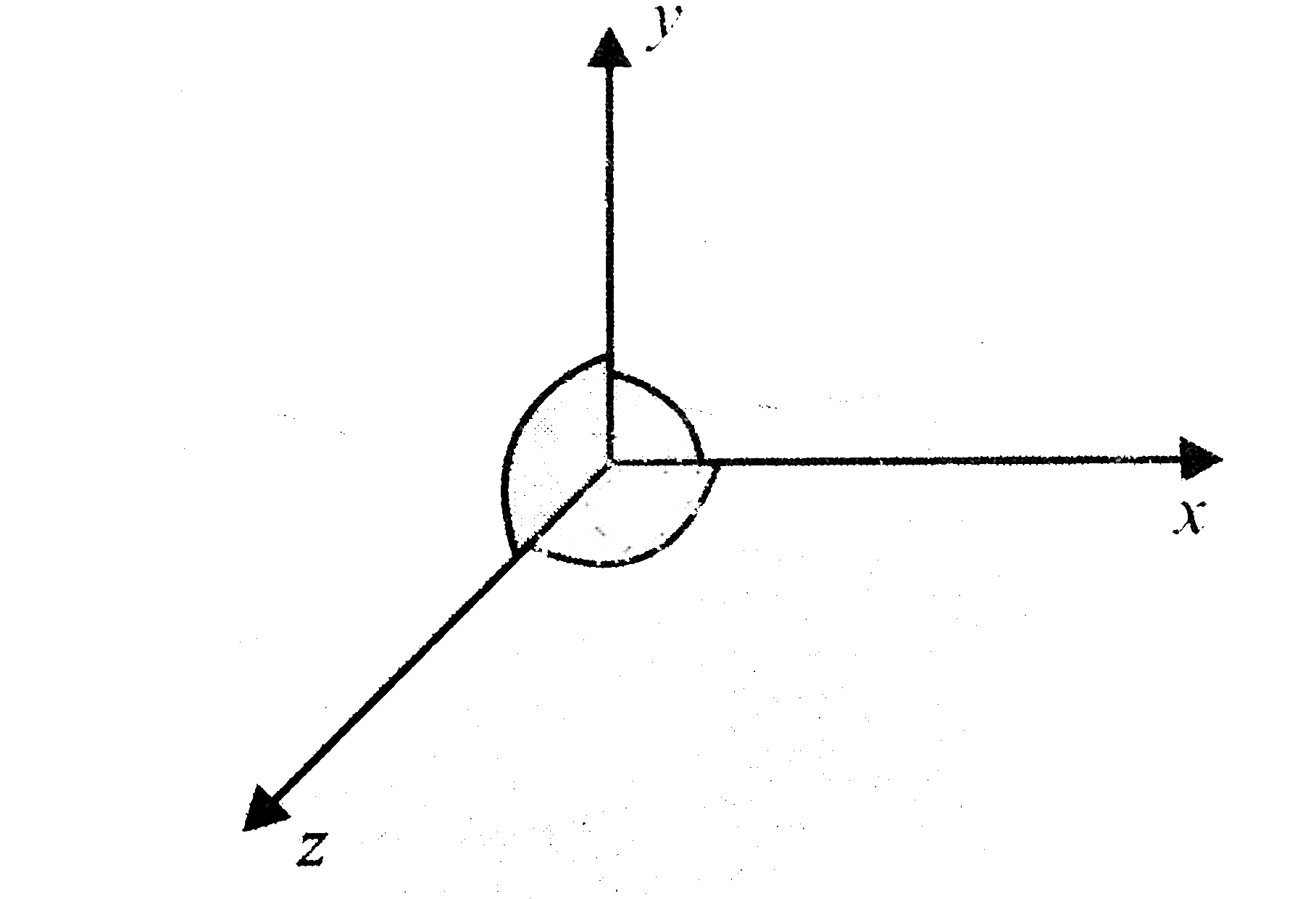Two bodies of masses 10kgand2kg are moving with velocities (2ˆi−7ˆj+3ˆk)and(−10ˆi+35ˆj−3ˆk)m/s respectively. Calculate the velocity of their centre of mass.
1. 2ˆims−1
2. 2ˆkms−1
3. (2ˆj+2ˆk)ms−1
4. (2ˆi+2ˆj+2ˆk)ms−1
The correct Answer is:B
To calculate the velocity of the center of mass (V_com) of the two bodies, we can use the following formula:
Vcom=m1V1+m2V2m1+m2
Where:
- m1 and m2 are the masses of the two bodies.
- V1 and V2 are the velocities of the two bodies.
Step 1: Identify the given values
- Mass of the first body, m1=10kg
- Velocity of the first body, V1=(2^i−7^j+3^k)m/s
- Mass of the second body, m2=2kg
- Velocity of the second body, V2=(−10^i+35^j−3^k)m/s
Step 2: Substitute the values into the formula
Vcom=10⋅(2^i−7^j+3^k)+2⋅(−10^i+35^j−3^k)10+2
Step 3: Calculate the numerator
First, calculate m1V1 and m2V2:
m1V1=10⋅(2^i−7^j+3^k)=(20^i−70^j+30^k)
m2V2=2⋅(−10^i+35^j−3^k)=(−20^i+70^j−6^k)
Now, add these two results together:
m1V1+m2V2=(20^i−70^j+30^k)+(−20^i+70^j−6^k)
Combining the components:
- For ^i: 20−20=0
- For ^j: −70+70=0
- For ^k: 30−6=24
So, we have:
m1V1+m2V2=0^i+0^j+24^k=24^k
Step 4: Calculate the denominator
The total mass is:
m1+m2=10+2=12kg
Step 5: Calculate the velocity of the center of mass
Now substitute back into the formula:
Vcom=24^k12=2^km/s
Final Answer
The velocity of the center of mass is:
Vcom=2^km/s
---
- m1 and m2 are the masses of the two bodies.
- V1 and V2 are the velocities of the two bodies.
- Mass of the first body, m1=10kg
- Velocity of the first body, V1=(2^i−7^j+3^k)m/s
- Mass of the second body, m2=2kg
- Velocity of the second body, V2=(−10^i+35^j−3^k)m/s
Vcom=10⋅(2^i−7^j+3^k)+2⋅(−10^i+35^j−3^k)10+2
First, calculate m1V1 and m2V2:
- For ^j: −70+70=0
- For ^k: 30−6=24
The total mass is:
Now substitute back into the formula:
The velocity of the center of mass is:
Topper's Solved these Questions
Similar Questions
(b) Two bodies of masses 10kg and 2 kg are moving with velocities 2ˆi−7ˆj+3ˆk and −10ˆi+35ˆj−3ˆkm/s respectively. Find the velocity of the centre of mass.
View SolutionTwo bodies of 6kg and 4kg masses have their velocity 5ˆi−2ˆj+10ˆk and 10ˆi−2ˆj+5ˆk respectively. Then, the velocity of their centre of mass is
View Solution
Knowledge Check
Two particles of masses 1 kg and 3 kg have position vectors 2ˆi+3ˆj+4ˆkand−2ˆi+3ˆj−4ˆk respectively. The centre of mass has a position vector
Aˆi+3ˆj−2ˆkB−ˆi−3ˆj−2ˆkC−ˆi+3ˆj+2ˆkD−ˆi+3ˆj−2ˆkTwo particles of masses 1 kg and 3 kg have position vectors 2ˆi+3ˆj+4ˆkand−2ˆi+3ˆj−4ˆk respectively. The centre of mass has a position vector
Aˆi−3ˆj−2ˆkB−ˆi−3ˆj−2ˆkC−ˆi+3ˆj+2ˆkD−ˆi+3ˆj−2ˆk
Two particles of masses 100 gm and 300 gm have at a given time, position 2ˆi+5ˆj+13ˆk and −6ˆi+4ˆj−2ˆk respectively and velocities 10ˆi−7ˆj−3ˆk and −7ˆi−9ˆj−6ˆk m/s respectively. Deduce the instantaneous position and velocity of the Centre of mass.
View SolutionThe position vector of three particles of masses m1=1kg.
m2=2kg and m3=3kg are r1=(ˆi+4ˆj+ˆk)m, r2=(ˆi+ˆj+ˆk)m and r3=(2ˆi−ˆj−2ˆk)m respectively. Find the position vector of their centre of mass.
View SolutionThe position vector of three particles of masses m1=2kg.
m2=2kg and m3=2kg are r1=(2ˆi+4ˆj+ˆk)m, r2=(ˆi+ˆj+ˆk)m and r3=(2ˆj−ˆj−2ˆk)m respectivley. Find the position vector of their centre of mass.
View SolutionTwo bodies of different masses 2kg and 4kg are moving with velocities 2m/s and 10m/s towards each other due to mutual gravitational attraction. Then the velocity of the centre of mass is
View SolutionTwo particles whose masses are 10 kg and 30 kg and their position vectors are ˆi+ˆj+ˆkand−ˆi−ˆj−ˆk respectively would have the centre of mass at position :-
View SolutionA mud ball at rest explodes into three fragmennts of masses in the ragio 1:2:1. the two equal masses move with velocities 2ˆi+5ˆj−6ˆk and −4ˆi+3ˆj+2ˆk. Find the velocity of the find mass.

View Solution

